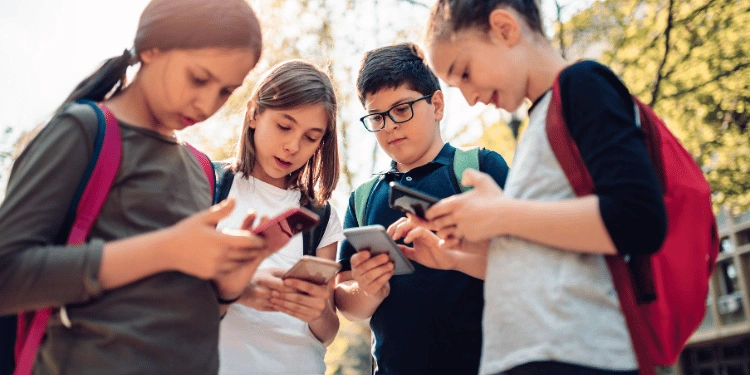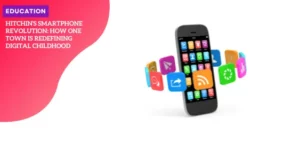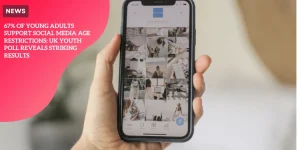School Smartphone Debate Heats Up
Current State of Smartphone Policies in Schools
Current Landscape
The current state of smartphone policies in schools is rather fragmented.
Despite ongoing debates and the recognition of smartphones potentially having a negative impact on student behaviour, not all schools have taken decisive action.
In fact, only 48% of secondary schools have put in place a complete ban on smartphone usage during school hours.
This indicates that more than half of the secondary schools are either lenient with their policies or have adopted partial restrictions.
Smartphone Collection Practices
An even more striking statistic is that a mere 9% of schools collect smartphones at the start of the day.
This approach, which ensures that students do not access their phones at all during school hours, is practiced by an alarmingly low number of schools.
This raises questions about the effectiveness of current strategies in managing phone use among students and the dedication of school administrations to enforce stricter controls.

The Official Stance
Recognizing the ongoing challenges, the Education Secretary, Bridget Phillipson, has taken a firm stance on the issue.
She has openly called smartphones “disruptive, distracting, and bad for behaviour,” reflecting her concern over their adverse effects on the educational environment.
Phillipson has emphasized that smartphones have no place in schools and supports a comprehensive ban on their usage during the school day.
Moving Forward
Given the mixed adherence to current smartphone policies, there is a clear need for a reassessment of the guidelines.
The Education Secretary’s initiative to review the effectiveness of these policies is a step in the right direction, pointing towards an eagerness for actionable solutions.
This move sets the stage for further evaluation and potential regulatory changes to better manage smartphone use in schools.
See a point of view where the smartphone is part of school education: Hitchin’s Smartphone Initiative
Government’s Response to Growing Concerns
Initiating a Comprehensive Review
The Education Secretary, Bridget Phillipson, has responded proactively to the rising concerns surrounding smartphone use in schools by initiating a thorough review of the current guidelines.
Phillipson’s response comes in light of mounting pressure from Members of Parliament who are alarmed by the adverse effects that social media can have on teenagers.
This review aims to scrutinise if the existing policies on smartphone bans are being enforced effectively in schools and if they are achieving desired outcomes.
Assessing the Effectiveness of Current Policies
One of the key focal points of this review is to determine the real-world impact of partial and complete smartphone bans.
Despite ministerial guidance suggesting the prohibition of mobile phones throughout the school day, current statistics indicate that only 48% of secondary schools enforce such a ban, with a mere 9% of schools collecting phones at the start of the day.
The Education Secretary has underscored the necessity for schools to rid their classrooms of the disruption caused by phones, asserting that they have no place in an educational setting.
Phillipson has emphasised the government’s stance, expressing strong support for schools that implement phone-free environments.
She has also tasked officials with the responsibility of accurately monitoring the application and outcomes of these policies to ensure they are effective.
Additional Research on the Impact of Social Media
Furthermore, Technology Secretary Peter Kyle has taken steps to deepen the understanding of how smartphones and social media affect children.
Kyle has commissioned the University of Cambridge to conduct rigorous research into this area.
This investigation is crucial, given the findings from a University of Birmingham study which revealed that simple smartphone bans are not sufficiently impactful.
The study highlighted that longer durations of smartphone use were linked to poorer academic performance and mental health issues, indicating the need for a more nuanced and comprehensive approach beyond just banning phones.
As the debate intensifies and new evidence comes to light, it is evident that a balanced and well-informed strategy is essential for fostering student wellbeing and enhancing educational outcomes.
Research Findings Challenge Ban Effectiveness
The debate over smartphone bans in schools has taken a new turn with recent research shedding light on the effectiveness of such policies.
The University of Birmingham conducted a study that contests the notion that banning smartphones directly improves students’ academic performance or mental wellbeing.
Bans Alone Don’t Cut It
The study’s lead author, Dr Victoria Goodyear, unveiled findings that smartphone bans in isolation are insufficient.
It seems that prohibiting phones doesn’t automatically lead to higher grades or better student mental health.
While these findings may surprise some, they underline the complexity of the issue. Students still grapple with distractions and behavioural issues, with or without their phones at hand.
The Impact of Prolonged Usage
What stands out in the research is the clear correlation between longer smartphone use and poorer academic performance.
Pupils who spend extended periods on their phones are more likely to struggle academically.
The link suggests that how and when smartphones are used plays a crucial role in their impact on students.
Towards a Multi-faceted Solution
Experts argue that a comprehensive approach is necessary.
Simply banning smartphones doesn’t address the root problem. Educators and policymakers need to tackle the factors leading to excessive smartphone use.
This could involve:
- ✅Educating students on responsible smartphone and social media usage.
- ✅Implementing digital literacy programmes.
- ✅Offering support for mental health issues exacerbated by constant connectivity.
The overarching goal is to create an environment that nurtures learning and wellbeing without the straightforward imposition of bans.
The findings from this research drive home the point that modern educational policies need to consider a blend of restrictions and educational initiatives to truly benefit students.
Creating an environment that mitigates distraction while fostering positive digital habits can be more effective than outright bans.
These insights pave the way for more nuanced discussions and policies. As the school smartphone debate continues, it becomes evident that a one-size-fits-all approach is unlikely to be the answer.
Going forward, collaboration between educators, policymakers, and researchers will be key to formulating strategies that best serve the students’ interests.
Political and Public Debate
Labour Votes Against Complete Ban
The issue of banning smartphones in schools has sparked a heated debate within the UK political sphere.
Recently, Labour MPs voted against the Conservative amendment proposing a full ban on smartphones in all schools.
This decision reflects the divided opinions on how to address the issue of smartphone use among students and seeks a more balanced, comprehensive approach rather than blanket bans.
It’s important to consider that effective strategies may require a combination of regulations and educational initiatives to manage smartphone use effectively.
Media Spotlight on Smartphone Concerns
The contentious issue of smartphones in schools has also caught the attention of popular media.
The TV show ‘The Accused’ has highlighted the detrimental impacts that smartphones can have on young people.
The show portrays the challenges faced by the family of a teenager accused of a serious crime, with implications that excessive smartphone usage may have contributed to the tumultuous events.
Such narratives in media foster public awareness and debate, adding layers to the dialogue surrounding the educational and psychological impacts of phone use among adolescents.
Advocacy for Treating Smartphones Like Cigarettes
Writer Jack Thorne, known for his work on ‘The Accused,’ has taken a strong stance by suggesting that smartphones should be treated like cigarettes for those under 16.
This analogy underscores the potential harm that unrestricted smartphone access can cause, likening it to the regulation of a recognised, harmful substance like tobacco. It is a thought-provoking comparison aiming to provoke more stringent policies and societal awareness on the matter.
As this debate progresses, it is clear that a singular approach may not suffice.
A nuanced combination of restrictions, educational programs, and ongoing research is crucial to developing effective policies that prioritize student wellbeing.
Future Implications and Considerations
Balancing Restrictions and Education
As the debate around smartphones in schools continues, it’s clear that a balanced approach is essential.
While outright bans are tempting, evidence suggests they are not wholly effective. Instead, a combination of restrictions and education on responsible phone usage could be more beneficial.
Teaching students digital literacy and setting clear boundaries might help them manage their screen time better, leading to improved academic performance and mental well-being.
Government Support for Phone-Free Environments
Acknowledging the disruptive nature of smartphones, Education Secretary Bridget Phillipson has reaffirmed government backing for schools enforcing smartphone bans during the school day.
This support is crucial for schools trying to maintain a focused and productive learning environment.
By removing distractions, educators hope to improve student engagement and behaviour, thereby fostering a better educational atmosphere.
Ongoing Research for Effective Policies
To shape the best policies for student well-being, ongoing research is vital.
The separate research commissioned by Technology Secretary Peter Kyle from the University of Cambridge will focus on the broader effects of social media and smartphones Education secretary to review guidance on smartphones in schools amid calls for outright ban on children.
These insights, combined with existing studies, will help policymakers develop comprehensive strategies that address both technological impacts and educational needs.
A multi-faceted approach, considering both restrictions and proactive education, seems essential.
As more schools adopt phone-free environments and new research continues to provide guidance, the goal remains to prioritise student well-being and academic success.






